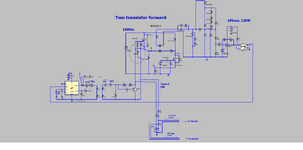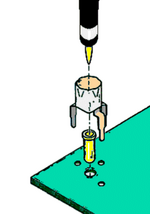cupoftea
Advanced Member level 5
When scoping the gate of the high-side transistor of an offline Two Transistor Forward (2TF),
I usually use a DIY (x1) coaxial probe, but with the 2TF powered through an isolation transformer,
so that the probe doesn't blow up the 2TF.
However, this means that the switching node is clamped to earth potential,
and then the entire converter's circuitry is banging up and down around that.
Hardly ideal for noise reduction.
The only alternative is to use a diff probe...but, with their hopelessly straggly
long leads, the noise on the scope is then massive.
Do you have a better way?
I usually use a DIY (x1) coaxial probe, but with the 2TF powered through an isolation transformer,
so that the probe doesn't blow up the 2TF.
However, this means that the switching node is clamped to earth potential,
and then the entire converter's circuitry is banging up and down around that.
Hardly ideal for noise reduction.
The only alternative is to use a diff probe...but, with their hopelessly straggly
long leads, the noise on the scope is then massive.
Do you have a better way?



